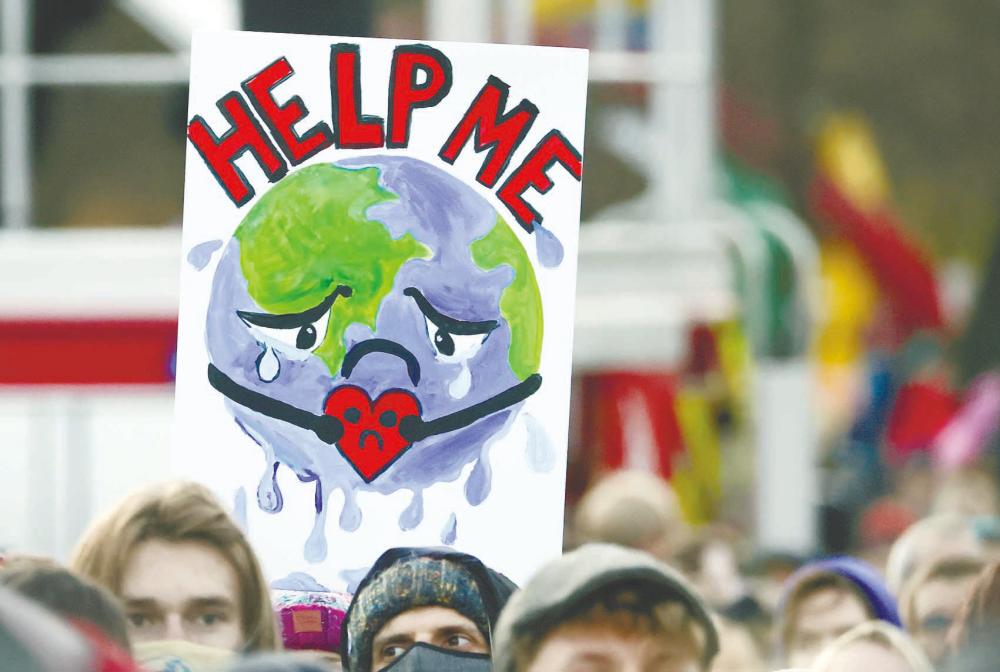THE nation’s economists and politicians have gone off tangent in prioritising economic growth and voting power over climate concerns.
Just as a pothole-free road is necessary for a safe drive, ecology must go hand in hand with the economy and politics. We begin this final instalment of our 10-part series on Adam and Eve by reiterating the pertinent allegorical message of the old Hebrew thriller.
The story is an account of humanity’s fall into relationship conflicts, sparked off by the discord with nature.
The allegory depicts our transition from a wild, indigenous forest life to the pre-civilisational state of agriculture.
Farming marks the point when Adam is expelled from Eden. “The Lord God sent him out of the garden of Eden to till the ground from which he was taken” (Genesis 3:23).
Eden symbolises the wild natural state in which humanity dwelt for 300,000 years. The advent of farming sent humans out of nature and placed them in settlements away from nature. Crop planting was invented 12,000 years ago, and livestock herding followed 2,000 years later.
The story hints at a mental bifurcation occurring during this transitional stage to civilisation.
A division of human experiences into combative halves is represented by the term tov wa ra where ra is experienced as evil and becomes opposed to tov the good. Humans create evil by dividing relationships into the combative spheres of “I” versus “you” and “we” versus “them”.
Instead of humanity in nature, life becomes humanity versus nature. God tells Adam and Eve that they “must not eat from the tree of the knowledge of tov wa ra”. When Adam and Eve ate the fruit – when their minds indulged in bifurcation – they fell into a state of disharmony with nature.
“Then the eyes of both of them were opened, and they realised they were naked; so they sewed fig leaves together and made coverings for themselves” (Genesis 3:7). To be naked is the condition of all lifeforms from the amoeba to the ape. Being naked is a figure of speech for living in nature.
After the fallout, humanity adopted lifestyles that covered up the way of nature as depicted by the word “coverings” used as a metaphor.
This fallout with nature led to a breaking off from God. Genesis describes God as “walking in the garden” (Genesis 3:8), figuratively meaning that God is in nature. But the couple “hid from the Lord God” (same verse continued).
In falling out with nature, humanity alienates itself from God. It is crucial to note that alienation from God is a consequence of the alienation from nature, as it implies that the way back to God is through realignment with nature.
The next breach was the downgrading of women to “them” status and the assignment of blame. “The woman... gave me fruit from the tree and I ate” (Genesis 3:12).
As their principal role is defined as baby-making, they are blamed for Malaysia’s decreasing fertility rate, which has fallen from 4.9 children in 1970 to 1.6 children in 2022.
Recent months have seen calls for the government to introduce pro-natalist policies such as financial incentives for every new birth, extended parental leave and full childcare amenities at workplaces.
This use of women as baby machines is the final thrust that may push humanity over the edge of climate doom because 4.9 is an excessively high rate of births and 1.6 is just
a national average. Still above the 2.1 replacement level are two states: Terengganu (2.9) and Kelantan (2.7).
The rule of nature is that the population of any species must keep within its resource limits. All species have the potential to increase vastly in number over time but – except for civilised humans – they do not overpopulate. If any population breeds to excess, it runs out of food and habitat space
or its surplus numbers get devoured by the arrival of more predators.
Politicians ignore the fact that human overpopulation is the main trigger for global climate change, biodiversity loss and new pandemics. For them, more babies provide an opportunity to widen their voter support base. Economists welcome population booms because their sole concern is for economic growth that hinges on an ever-enlarging consumer base.
This unconcern for ecology is revealed in the statement of a local economist that declining populations will slow gross domestic product growth by shrinking consumer demand while contracting labour supply, and a speech by a political party leader at the Dewan Rakyat last November that moral support should be given to polygamous marriages to address the issue of late marriage.
The milestone year for a global spurt towards over-population is 1750. In that year, the world population was 850 million. This month, the figure has reached 8.1 billion. The number has multiplied 9.5 times in just 274 years.
At the dawn of agriculture 12,000 years ago, the global human population was only five million. Six trillion trees grew on Earth and atmospheric carbon dioxide was a low 280 parts per million.
The transition from a hunter-gatherer lifestyle to settled farming led to gradual population growth as one hectare of farmed land could feed more people.
As more hands were also needed to till the soil and care for livestock, agricultural families raised six to eight children and often up to 12.
However, the rise in population remained gradual although steady for 12,000 years as infant mortality rates were high and lifespan was under 50 years because of epidemics in crowded urban centres and lack of medical care.
From one billion to eight billion, and on to 10 billion
The exponential surge came
with the Industrial Revolution in 1750, bringing with it public healthcare improvements. The world population hit one billion
in 1800.
Fuelled primarily by coal and later oil combustion as well as massive deforestation, the population leaped to four billion in 1975. It doubled to eight billion last year.
During the pre-industrial era, just 4% of global ice-free, non-barren land was used for agriculture. Today, we use a full 50% of the habitable land surface.
If a population’s ecological footprint exceeds its biocapacity, that population has an ecological deficit. This means that the population’s demand for natural resources exceeds its supply.
In 2017, the world population was 7.6 billion and it had already incurred a global ecological deficit of 1.17 global hectares per person, or a biocapacity reserve of minus 1.17, meaning that consumption of natural resources had already then far outpaced the Earth’s ability to replenish those resources.
Today, atmospheric CO₂ stands at a staggering 419ppm and will keep rising as poor, heavily populated nations strive to reach American standards of living while ignoring the need to limit population growth to the replacement level of 2.1 births per family.
Malaysia recorded a big jump in CO₂ emissions from 5.44 tonnes in 2000 to 8.42 tonnes in 2020, compared with Singapore, a more developed nation (7.78 tonnes in 2020).
At the current rate of world population growth, before 2050, there will be 10 billion people. Even if the additional two billion use only solar power, more forests must be destroyed to make way for agriculture, housing and industries.
High-yield crops and high-rise living can reduce but cannot eliminate the necessity for greater deforestation. Land despoilation, however, reduces the Earth’s ability to absorb atmospheric CO₂.
Although 155 of 204 countries and territories worldwide (76%) will have fertility rates below population replacement levels by 2050, the remaining 24% are pushing birth rates.
The practice of having six to nine children per family is being maintained in large parts of the world for religious, economic and political reasons especially to gain victory at democratic elections as democracy is a numbers game.
To make them prolific baby producers, girls are married off at age 15 or 16 so they can give birth every three years on average before they reach 40.
In the holy land of Palestine-Israel, the common proclamation on both sides is that they are serving God by multiplying through unlimited births.
“A lot of things are in God’s hands, and this is one of them,” is the common remark you hear as the two sides play a numbers game for electoral power.
Scriptures are misinterpreted to serve political ends. For instance, although the Torah says: “Be fruitful and multiply; fill the earth and subdue it” (Genesis 1:28), “fill the earth” means so long as there are sufficient natural resources to support the numbers.
The words “subdue it” must be read in the context of the preceding verse which states: “God created man in His own image; in the image of God He created him; male and female He created them” (Genesis 1:27). Just as God cares for nature (“walking in the garden”), so must humans care by complying with the operating principles of nature that seek a match between resources and numbers.
Scientists see the need for population degrowth and to make environmental rescue the central organising principle of society, as we are facing the risk of losing everything to climate change.
If women have their first child at 27 instead of 17, and two or three babies instead of six to nine, it could be the prompting of Mother Nature to achieve population degrowth.
Isn’t this better than nature coming on strong with monstrous floods, killer heatwaves and horrifying pandemics?










